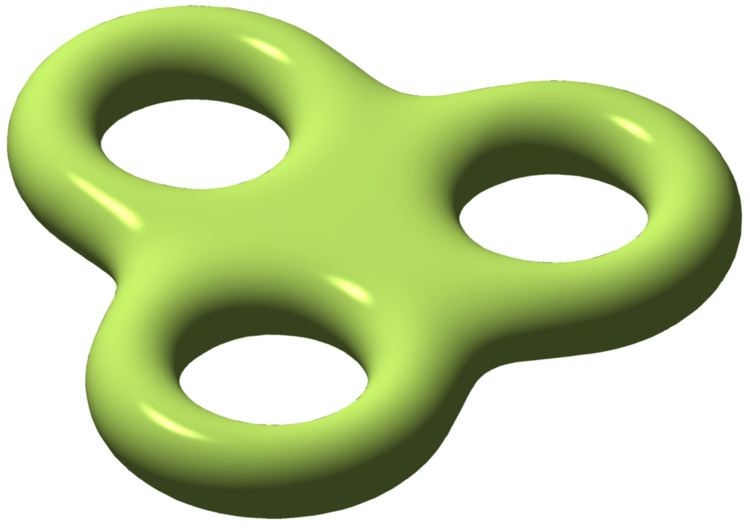 | ||
In the mathematical field of geometric topology, a handlebody is a decomposition of a manifold into standard pieces. Handlebodies play an important role in Morse theory, cobordism theory and the surgery theory of high-dimensional manifolds. Handles are used to particularly study 3-manifolds.
Contents
Handlebodies play a similar role in the study of manifolds as simplicial complexes and CW complexes play in homotopy theory, allowing one to analyze a space in terms of individual pieces and their interactions.
n-dimensional handlebodies
If
is an embedding, the
is said to be obtained from
by attaching an
3-dimensional handlebodies
A handlebody can be defined as an orientable 3-manifold-with-boundary containing pairwise disjoint, properly embedded 2-discs such that the manifold resulting from cutting along the discs is a 3-ball. It's instructive to imagine how to reverse this process to get a handlebody. (Sometimes the orientability hypothesis is dropped from this last definition, and one gets a more general kind of handlebody with a non-orientable handle.)
The genus of a handlebody is the genus of its boundary surface. Up to homeomorphism, there is exactly one handlebody of any non-negative integer genus.
The importance of handlebodies in 3-manifold theory comes from their connection with Heegaard splittings. The importance of handlebodies in geometric group theory comes from the fact that their fundamental group is free.
A 3-dimensional handlebody is sometimes, particularly in older literature, referred to as a cube with handles.
Examples
Let G be a connected finite graph embedded in Euclidean space of dimension n. Let V be a closed regular neighborhood of G. Then V is an n-dimensional handlebody. The graph G is called a spine of V.
Any genus zero handlebody is homeomorphic to the three-ball B3. A genus one handlebody is homeomorphic to B2 × S1 (where S1 is the circle) and is called a solid torus. All other handlebodies may be obtained by taking the boundary-connected sum of a collection of solid tori.
